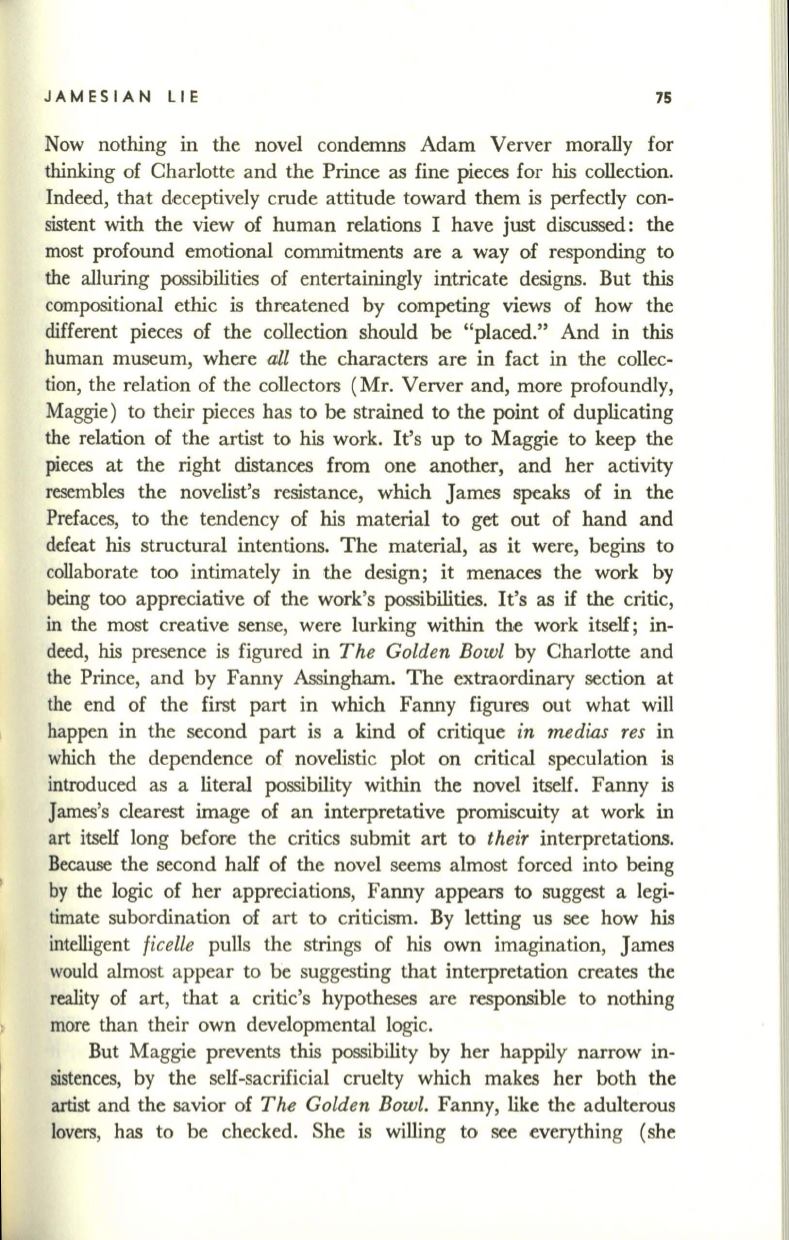
JAMESIAN LIE
75
Now nothing in the novel condemns Adam Verver morally for
thinking of Charlotte and the Prince as fine pieces for his collection.
Indeed, that deceptively crude attitude toward them is perfectly con–
sistent with the view of human relations I have just discussed: the
most profound emotional commitments are a way of responding to
the alluring possibilities of entertainingly intricate designs. But this
compositional ethic is threatened by competing views of how the
different pieces of the collection should be "placed." And in this
human museum, where
all
the characters are in fact in the collec–
tion, the relation of the collectors (Mr. Verver and, more profoundly,
Maggie) to their pieces has to be strained to the point of duplicating
the relation of the artist to his work. It's up to Maggie to keep the
pieces at the right distances from one another, and her activity
resembles the novelist's resistance, which James speaks of in the
Prefaces, to the tendency of his material to get out of hand and
defeat his structural intentions. The material, as it were, begins to
collaborate too intimately in the design; it menaces the work by
being too appreciative of the work's possibilities. It's as
if
the critic,
in the most creative sense, were lurking within the work itself; in–
deed,
his
presence is figured in
The Golden Bowl
by Charlotte and
the Prince, and by Fanny Assingham. The extraordinary section at
the end of the first part in which Fanny figures out what will
happen in the second part is a kind of critique
in medias res
in
which the dependence of novelistic plot on critical speculation is
introduced as a literal possibility within the novel
itself.
Fanny is
James's clearest image of an interpretative promiscuity at work in
art itself long before the critics submit art to
their
interpretations.
Because the second half of the novel seems almost forced into being
by the logic of her appreciations, Fanny appears to suggest a legi–
timate subordination of art to criticism. By letting us see how his
intelligent
ficelle
pulls the strings of his own imagination, James
would almost appear to be suggesting that interpretation creates the
reality of art, that a critic's hypotheses are responsible to nothing
more than their own developmental logic.
But Maggie prevents
this
possibility by her happily narrow in–
sistences, by the self-sacrificial cruelty which makes her both the
artist and the savior of
The Golden Bowl.
Fanny, like the adulterous
lovers, has to be checked. She is willing to see everything (she


